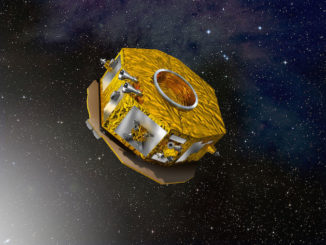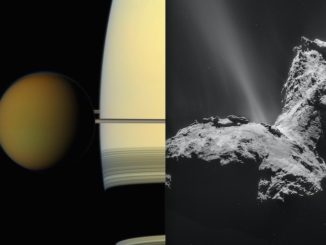
Observations of Comet Wirtanen from the Stratospheric Observatory for Infrared Astronomy, or SOFIA, reinforce the idea that so-called hyperactive comets may have played a major role bringing water to Earth in the distant past.
Data collected during Wirtanen’s closest approach to Earth in December 2018 show the comet contains a similar ratio of normal to heavy water as is found in sea water on Earth. Normal water, or H2O, is made up of two atoms of hydrogen and one of oxygen, while heavy water, or HDO, includes an isotope of hydrogen – deuterium – with an additional neutron. The ratio of deuterium to hydrogen, known as the D/H ratio, is one way to compare different sources of water to trace the origins of Earth’s oceans.
In previous studies, the D/H ratios of comets were found to be up to three times higher than in ocean water, implying comets could only have delivered about 10 percent of the water found on Earth.
But the Wirtanen observations marked only the third time a comet was found with a D/H ratio similar to Earth’s oceans. Like the two previous comets, Wirtanen is a hyperactive comet that releases more water in the warmth of the Sun than would normally be expected based on the surface area of the nucleus. The excess is produced by ice particles in the comets’ atmospheres.
Comparing those readings with the results of previous studies, the researchers were surprised to find the ratio of normal to heavy water did not depend on where the comets originated, whether in the relatively nearby Kuiper Belt or the far more distant Oort Cloud. Instead, the ratio was related to how much water was released directly from the comet’s surface compared to a combination of surface and atmospheric ice grains. The more active the comet, the more its D/H ratio decreases.
The researchers suggest D/H readings from cometary atmosphere’s produced by surface ice alone may not be indicative of the total amount of ice making up the comet and as such, the water locked up in all comets may be similar to terrestrial water.
“This is the first time we could relate the heavy-to-regular water ratio of all comets to a single factor,” said Dominique Bockelée-Morvan, a scientist at the Paris Observatory and the French National Center for Scientific Research. “We may need to rethink how we study comets because water released from the ice grains appears to be a better indicator of the overall water ratio than the water released from surface ice.”



